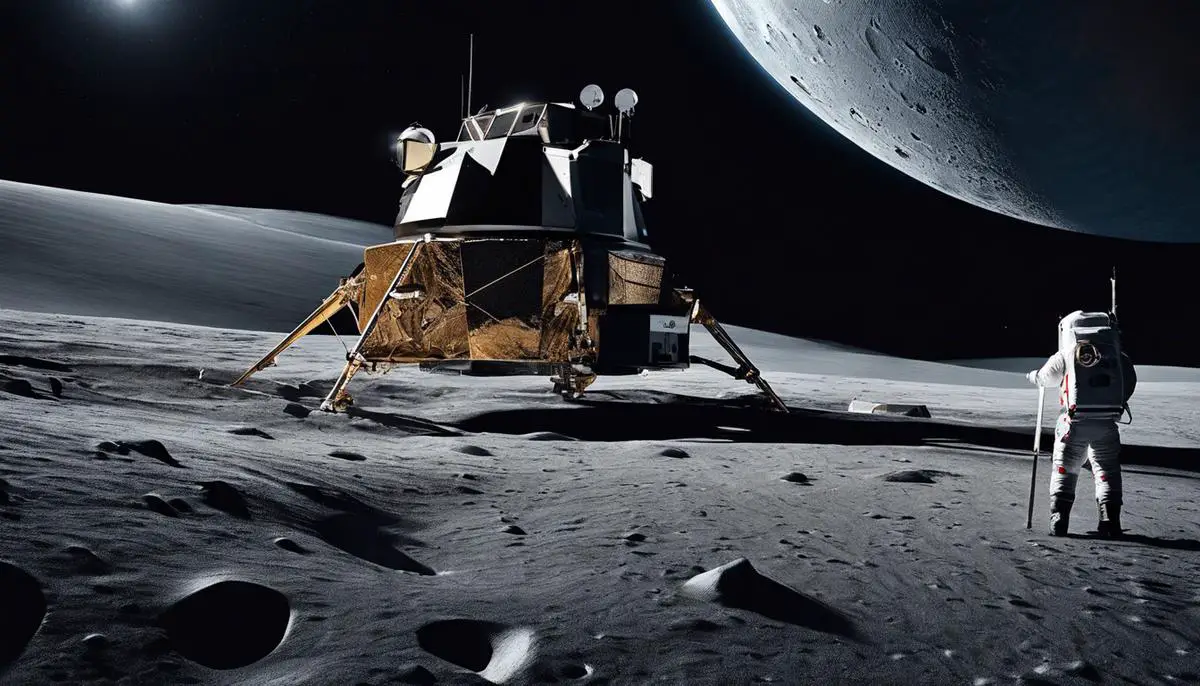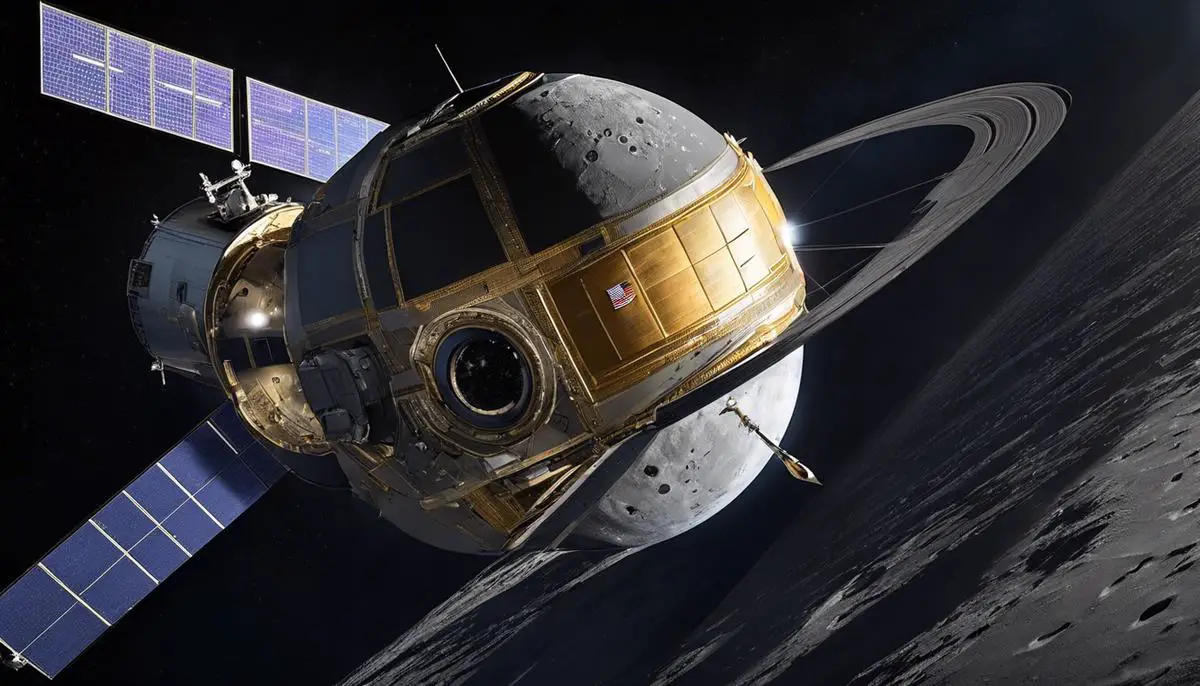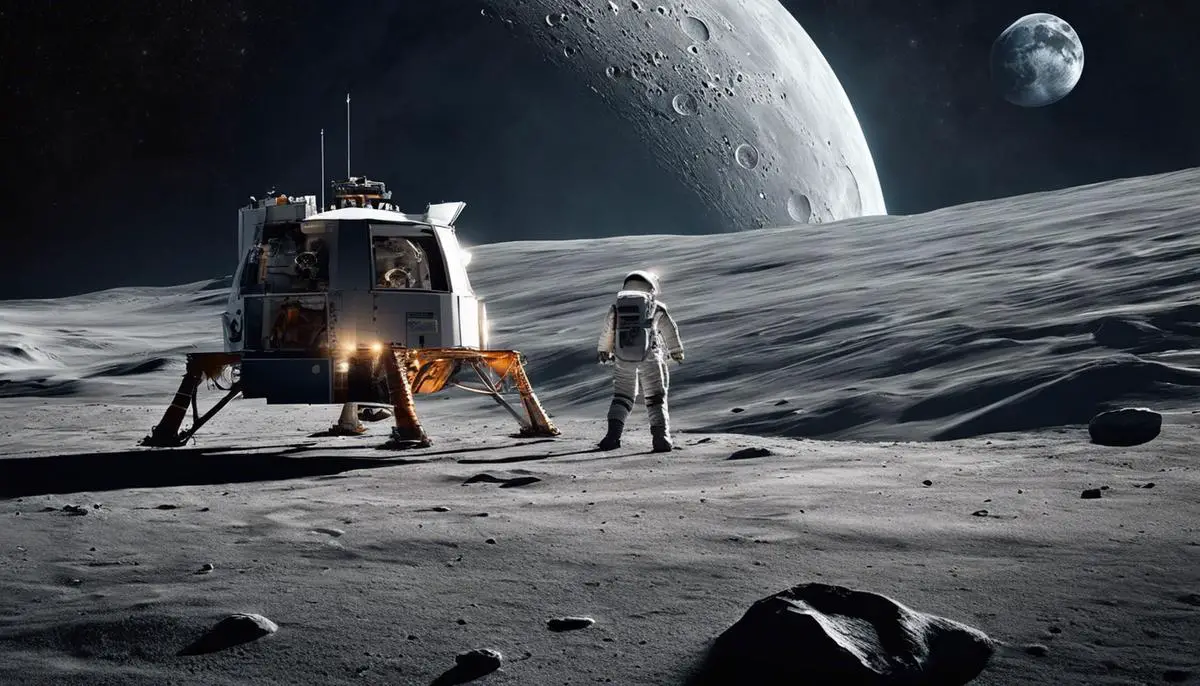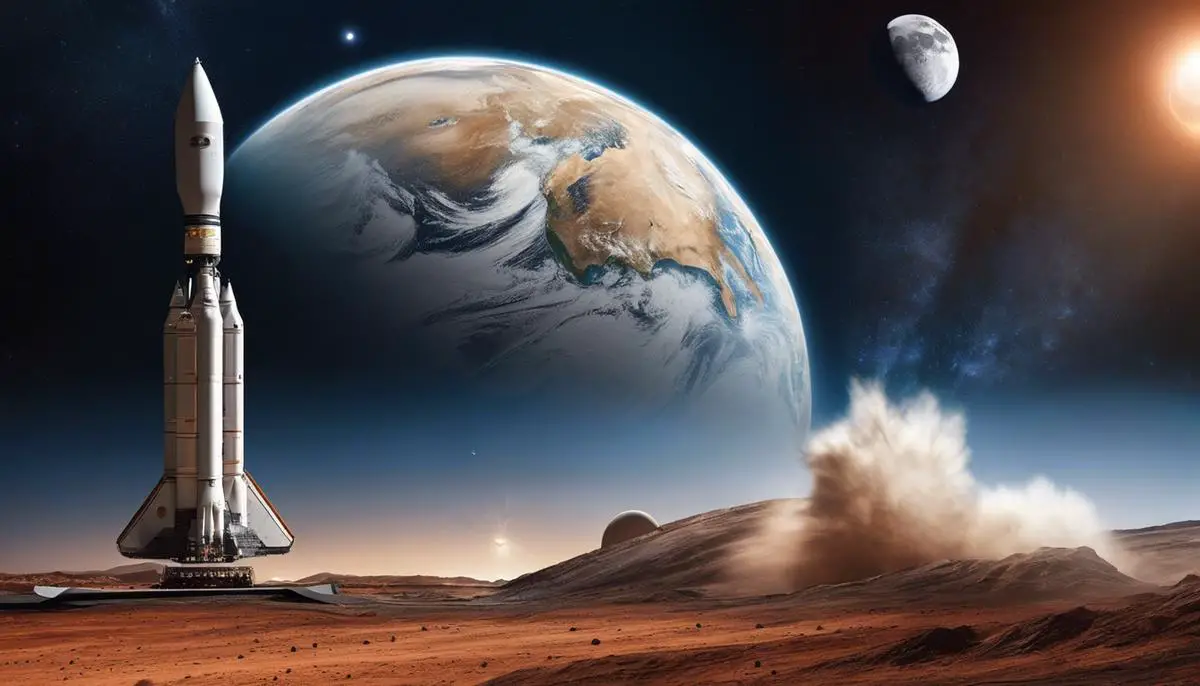Setting our sights on the rapidly evolving industry of space exploration, NASA’s Artemis III mission emerges as a noteworthy venture aiming to, once again, establish the human presence on the Moon. Propelling beyond the confines of our planet, this ambitious undertaking symbolizes a rally towards the progression of humanity’s interplanetary future. It extends beyond the lunar surface, seeking to develop a sustainable human presence and carving a path to Mars and beyond. The journey of Artemis III incorporates a comprehensive approach, engaging multiple institutions and nations, with its groundwork deeply vested in rigorous planning, cutting-edge technologies, and a visionary execution plan.
Contents
- 1 An Overview of the Artemis III Mission
- 2 The Moon to Mars Approach of Artemis III
- 3 Scientific Objectives of Artemis III
- 4 The Role and Impact of Artemis III on Future Space Exploration
- 4.1 Embracing a New Era of Lunar Surface Operations
- 4.2 Collection and Analysis of Lunar Samples to Unravel Moon’s Mysteries
- 4.3 Moon as a Platform for Astrophysical Study
- 4.4 Galvanizing International Cooperation in Space Exploration
- 4.5 Inspiring the Next Generation
- 4.6 In Conclusion: Pushing Humanity Forward
An Overview of the Artemis III Mission
Artemis III: A Groundbreaking Avenue in Space Exploration
Artemis III, for those unfamiliar with the venture, is a much-anticipated lunar mission planned to be launched by the National Aeronautics and Space Administration (NASA) by 2024. This noteworthy program’s primary objective is to land “the first woman and the next man” on the Moon’s South Pole, a geographical feature interestingly never visited by humankind.
Named after the twin sister of Apollo in Greek mythology, Artemis III is far more than just a symbolic successor to the Apollo missions of the 1960s and 70s. This mission will feature cutting-edge tech, such as a powerful new rocket called the Space Launch System (SLS) and a new spaceship named Orion. Not to mention, they also intend to establish sustainable lunar exploration by the end of the decade—a daunting yet riveting prospect.
Musing over its significance in space exploration evokes two pivotal elements: a ‘stepping stone’ to Mars and the commencement of the Lunar Gateway. The Artemis III plan elaborately encompasses missions to create a sustainable base on the moon. This lunar base is not viewed as an end but a stepping stone for reaching the more ambitious goal: Mars. Harnessing the moon’s resources and testing new technology will crucially support the long-term Mars missions. After all, innovative leaps on the Lunar surface significantly lessen the leap to Mars.
The Lunar Gateway, another key topic, refers to the small spaceship in the moon’s orbit. Serving as a science laboratory, living quarters, and holdout for rovers and other robots, it’ll be instrumental for lunar explorers. This intriguing celestial outpost will also dispatch astronauts to the Martian system, providing them invaluable deep-space experience.
Exploring the intricate choreography of Artemis III’s timeline reflects the intense preparation needed. NASA plans to launch a test flight around the moon – Artemis I – expected by 2021. Followed by Artemis II, a manned mission around the moon, but without landing. Our main hero, Artemis III, wherein astronauts will finally touch down on the Lunar South Pole, enters the scene afterward.
Therefore, the significance of Artemis III extends well beyond its immediate objectives. This essential mission underpins America’s approach to future space explorations and technological advancements. So, as timelines get more precise and hardware begins to take shape, the excitement for Artemis III continues to build. This single mission, ambitious as it is, stands to revolutionize humanity’s presence in outer space.

The Moon to Mars Approach of Artemis III
Delving deeper into the heart of Artemis III, one can’t help but marvel at NASA’s meticulous strategies and multi-tiered methodologies employed. At its core, this mission seeks to invigorate space exploration efforts and assert dominance in colonizing celestial bodies such as the moon and eventually, Mars. These are no small feats, and the methodology applied is indeed something worth dissecting.
Artemis III, characterized by its audacious ambitions, demonstrates an intellectual fascination unraveling through Reinventing Space Exploration Strategies. Here, we witness an organization shifting from solely government-run operations to embracing significant contributions from commercial and international partners. By cultivating a community inclusive of industries worldwide, NASA amplifies innovation and competition. This ecosystem of collaborative efforts is a powerhouse propelling the Artemis III mission and magnifying the chance of successful lunar and Mars colonization.
Approaching it from the perspective of Advancing Lunar Science and Research yields profound insights. The Artemis III mission, beyond its immediate tasks, fortifies a platform for exploring, investigating, and understanding the moon’s complexities. It aims to extract lunar samples, engage in surface operations, and conduct experiments that would be pivotal in enhancing our knowledge about the moon’s geology, environment, and our solar system as a whole.
Progressively, the Artemis III mission also nurtures a robust attitude towards Preparing for Mars Exploration. The program seeks to make a lunar presence a normalized endeavor through the proposed lunar base, laying a solid foundation for subsequently dominating efforts to colonize Mars. The harsh lunar environment will provide a perfect ground for testing advanced robotics, life support systems, and other technologies imperative in navigating Mars’s more intense environment.
Another not to be overlooked element is the focus on Accessibility and Economic Expansion. NASA aims to make access to space more equitable and spur economic growth. Artemis III contemplates the possibility of commercial cargo delivery services to the lunar surface, creating unprecedented business opportunities and fostering advancements in technology.
Lastly, the Artemis III mission is calculated to Energize the Public Engagement in Space Exploration. With an aspect of enigma surrounding space endeavours, NASA aims to draw the public’s curiosity, foster educational interests, and inspire a new generation of scientists, engineers, and astronauts. This strategy plays a pivotal role in maintaining sustainability and increasing mankind’s affinity with space exploration.
In this ambitious progression, we learn that the Artemis III lunar mission is not only about being the first to set foot on the moon again or the act of colonization, but it is also about redefining space exploration strategies, innovating through international collaborations, expanding scientific knowledge, inspiring public interest, and taking the first but solid steps toward transforming humans into a multiplanetary species. It indeed encapsulates the quintessential depiction of trailblazing resolute in the face of the unknown.

Scientific Objectives of Artemis III
While previous sections have detailed the monumental role of Artemis III in promoting lunar research, setting a foundation for Mars missions, and fostering economic growth, it is equally paramount to delve into other avenues that Artemis III endeavors to illuminate. A nuanced exploration of these themes will fortify our understanding of the mission’s strategic objectives.
Comprehending the precise nature of lunar surface operations and rehearsing for future crewed missions to Mars are two essential engagements for Artemis III. The mission endeavors to learn how to properly maneuver on the lunar surface, operate equipment there, and choreograph astronaut endeavors across multiple extravehicular activities (EVAs), colloquially known as ‘moonwalks’. This rehearses for future Martian missions, as the activities will doubtlessly bear similarities.
Another key objective is to execute a host of scientific investigations on the Moon’s surface. This involves installing the first suite of NASA science instruments on the lunar surface since the Apollo era, collecting substantial lunary regolith and rock samples for return to Earth, and performing a comprehensive series of life sciences experiments. These activities will yield unprecedented insights into the Moon’s geology, internal structure, and the complexities of a non-Earth celestial biosphere.
An additional scientific facet of Artemis III revolves around leveraging the Moon’s unique perspective to observe the universe. Astronauts will employ state-of-the-art equipment to execute cutting-edge astrophysical observations directly from the lunar surface. This can provide an unrivaled platform to study the Sun, distant celestial bodies, and the cosmic microwave background, thereby deepening our understanding of universal phenomena.
Furthermore, Artemis III is committed to fostering global collaboration in space exploration. NASA plans to procure lunar delivery services from commercial and international partners, promote shared standards and norms in lunar activities, and advocate for peace and prosperity in space through the Artemis Accords. These efforts ensure that the mission not only benefits Americans but also contributes to an international coalition dedicated to exploring and understanding our vast universe.
In the realm of information dissemination, Artemis III aspires to keep the public informed and inspired, helping to cultivate the next generation of scientists, engineers, and explorers. By maintaining transparency in communication and actively engaging the public in mission milestones, NASA seeks to foster a global space community that is both knowledgeable and enthusiastic about their feats.
Pushing the boundaries of human capabilities, Artemis III aspires to be a transformative step in the timeline of space exploration. The mission, through its various objectives, encapsulates a profound thirst for knowledge, spirit of collaboration, and pursuit of excellence that perfectly encapsulates the ethos of scientific exploration.

The Role and Impact of Artemis III on Future Space Exploration
Embracing a New Era of Lunar Surface Operations
Protocols set in place by Artemis III will comprise the foundation on which future manned space missions, particularly those aimed at Mars, will be built. It will mark NASA’s return to surface operations on a celestial body after more than 50 years. Procedures, best practices, and first-hand experience garnered from this mission will be indispensable for preparing future astronauts for more complex exploratory missions on other planets.
Collection and Analysis of Lunar Samples to Unravel Moon’s Mysteries
Expanding the frontiers of lunar knowledge, Artemis III astronauts will engage in scientific investigations on the Moon’s surface. This includes installing NASA science instruments and systemically collecting lunar samples from the South Pole. Upon return, these samples will enable researchers to study the Moon’s geology and chemistry in unprecedented detail, thus providing crucial data about the Moon’s evolution and its relationship to Earth and the solar system.
Moon as a Platform for Astrophysical Study
From its unique vantage point, the Moon offers a pristine platform from which to study the cosmos. Artemis III will develop capabilities for utilizing this potential, enabling future missions to conduct comprehensive astrophysical observations and cosmic studies free from the radio interference that we experience on Earth.
Galvanizing International Cooperation in Space Exploration
In order to succeed in our quest for deep-space exploration, international cooperation is paramount. Through partnerships, shared standards, and fostering multilateral agreements like the Artemis Accords, the Artemis III initiative will pave the way for an unprecedented era of global collaboration in space exploration. This approach will bolster collective capacity to face challenges and share in the gains of space exploration.
Inspiring the Next Generation
An ethical mandate of such missions is the motivation of future generations towards scientific exploration. No pursuit, perhaps, captures the human imagination as vividly as space travel. The Artemis III mission, apart from its technological and scientific goals, endeavors to inspire young minds across the globe, encouraging them to envision and construct an exciting future of interplanetary exploration.
In Conclusion: Pushing Humanity Forward
Artemis III, beyond the confines of the mission’s specific objectives, signals a bold leap forward for humanity. It irreversibly expands the bounds of what is deemed possible by venturing into unchartered territories of space exploration. Not merely content with conquering the moon, Artemis III lays the blueprint for future interstellar endeavors, thereby placing us on the threshold of an era that redefines our place in the cosmos.

As we peer into the future, the Artemis III mission stands as a beacon, igniting prospects for new scientific discoveries, setting the stage for sustained lunar exploration, and finally, facilitating mankind’s interplanetary voyage to Mars. Its implications are sprawling, and the ripples of this mission will undoubtedly resonate across the realms of international cooperation, commercial partnerships, and technological innovation. Embracing the lunar dust, Artemis III is not an end but a beginning – a stepping stone in building the foundations of an interplanetary highway that will steer humanity to newer frontiers, charting the course of our cosmic journey.
